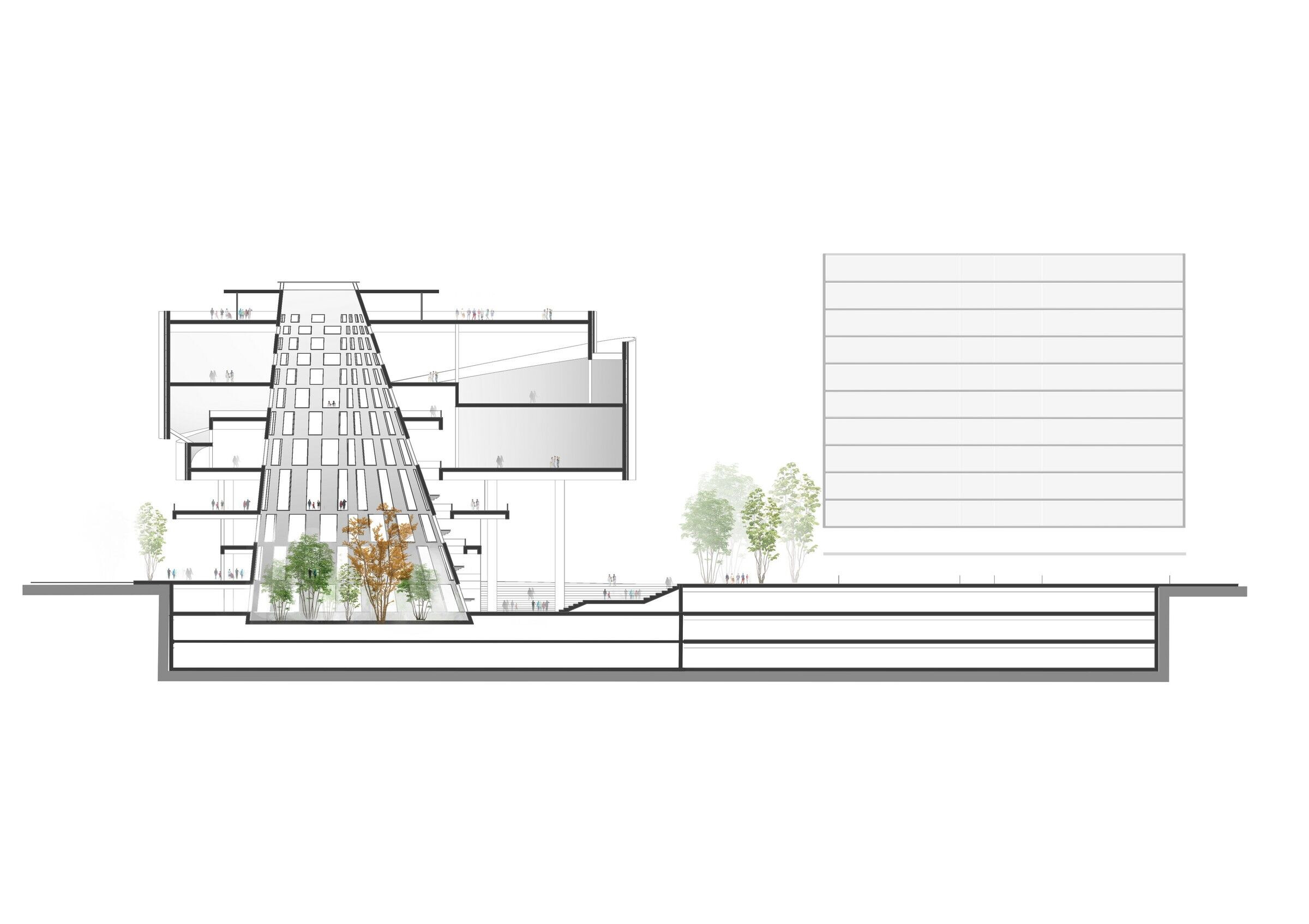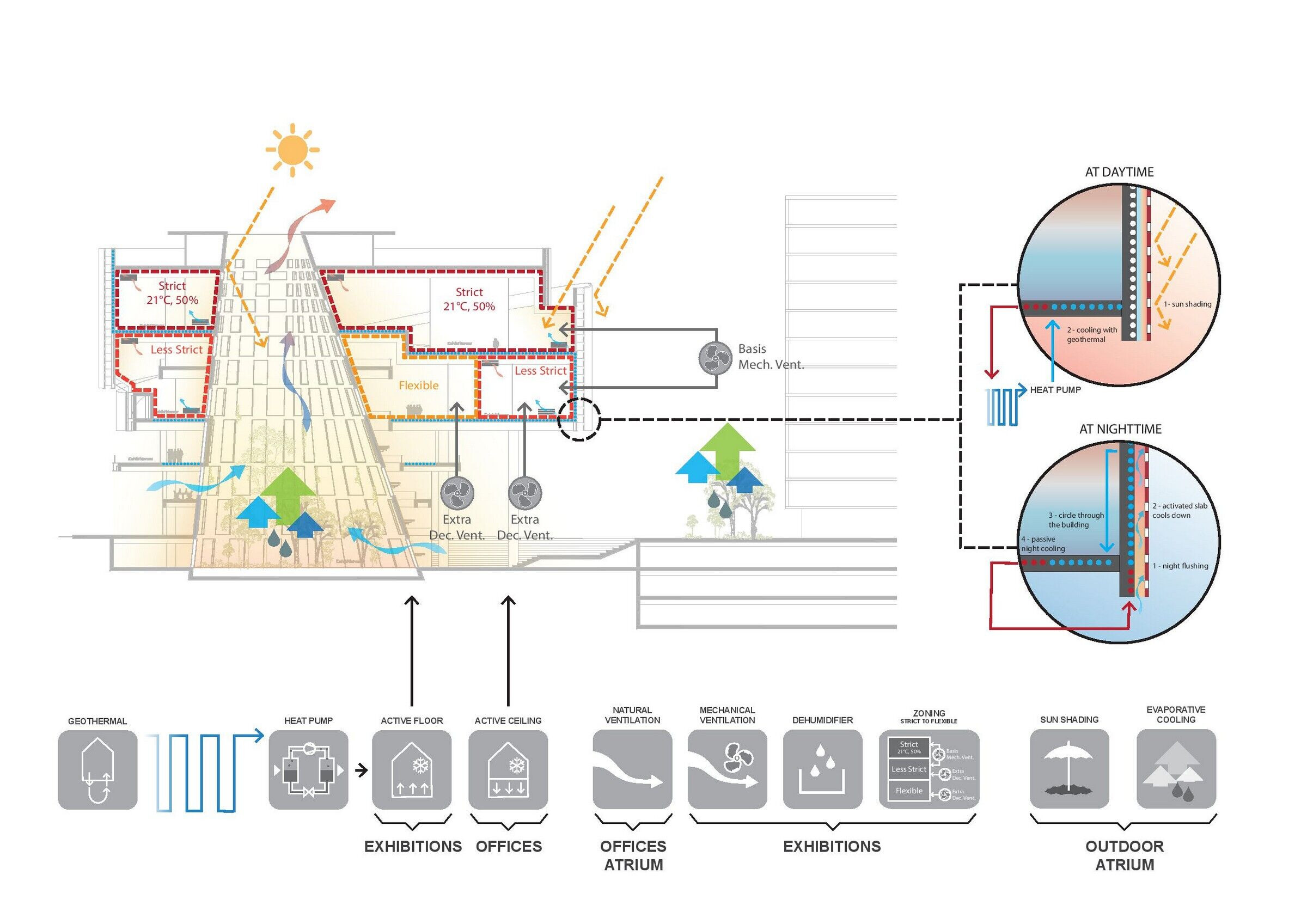Caught between the present and the past, East and West, peace and war, Beirut, the city of oppositions and dualities, embraces the dynamic and the serene, the bold and the ordinary, the grand and the sensitive. Destroyed and rebuilt over the years, Beirut has been shattered into fragments of a kaleidoscope that still reflects the magic within. The Beirut Museum of Art (BeMa) thus aims at becoming a cultural catalyst, bringing the diverse communities of the city together.

Contrasting the surrounding rectangular and geometric city blocks, the main museum’s organic form sets itself apart. It stands as a grand gesture yet maintaining its sensitivity to the context and city. Challenging gravity, the heavy impervious form is elevated over light platforms that allow the crisscrossing of the public underneath. The main platform further acts as an open space that visually connects art and the public.
The museum is sliced into two parts that represent Beirut’s duality. The two volumes shift defining the permanent and temporary exhibitions. The shift also allows Northern light to flow from the upper opening, and Southern light to be diluted through the lower opening; the latter also allowing visitors to visually interact with the street level. A kaleidoscopic structural core cuts through the entire building, filtering light into the spaces and fragmenting art across the museum walls. It also acts as a spatial connection for visitors across different platforms.

Team:
Architect: Najjar & Najjar Architekten
Design Team: Karim Najjar, Alaa Dagher, Dana Mohsen, Ahmad Nouraldeen
Consultants:
Climate Design: Transsolar Stuttgart
Structural Design: Nabil Najjar
Structure: Nabil Najjar




























